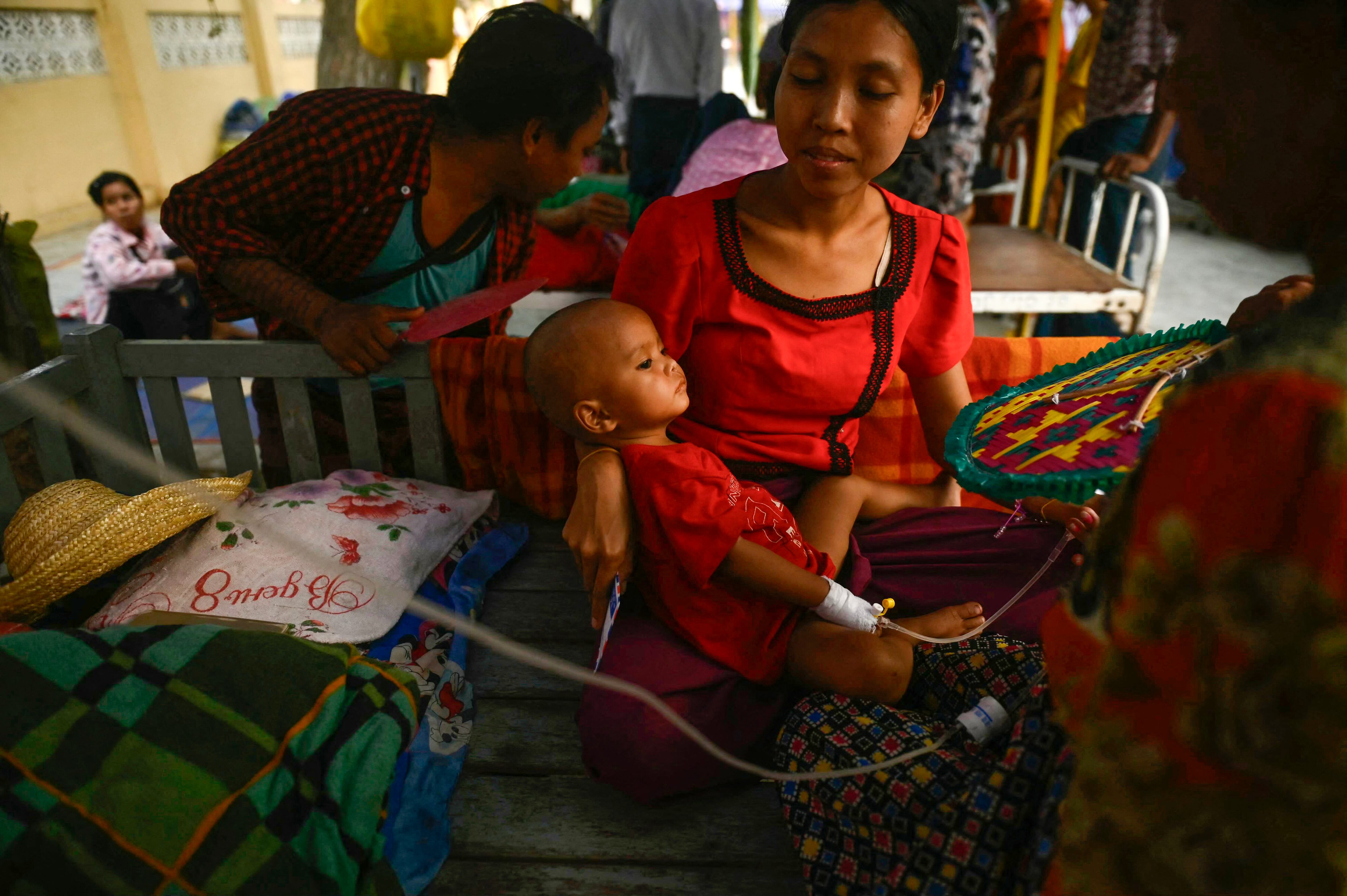Read RFA coverage of these topics in Burmese.
Updated April 3, 2025, at 10:40 a.m. ET.
The death toll from the devastating Myanmar earthquake rose past 3,000 on Thursday, according to the country’s military-controlled television, as a junta security clampdown slowed aid in some areas.
The 7.7 magnitude quake, which struck Friday between Sagaing town and Mandalay city, left many people without food, clean water and shelter in Naypyidaw, Bago and Magway regions as well as Shan state.
Myanmar Radio and Television reported 3,085 dead on Thursday, more than 4,700 people injured and 341 missing.
Nearly a week after the disaster, aid organizations were still conducting search and rescue operations, but many areas remain inaccessible, making it difficult to estimate the total number of people affected, said one volunteer.
The earthquake affected 17 million people across 57 of the country’s 330 townships, 9 million severely, the United Nations Office for the Coordination of Humanitarian Affairs estimated Thursday.
A total of 65 aftershocks occurred between Friday’s earthquake and Thursday morning, the junta’s meteorology department said in a statement.
In Mandalay, aftershocks forced residents to pitch tents in parks and other open areas, said one resident, who declined to be named for security reasons.
“In Mandalay when the aftershocks were happening, people were extremely worried. Houses were collapsing, apartment walls were cracking, we didn’t dare to stay there,” he said.
“We don’t have any hope for our houses. With the aftershocks, we’re just worried about not losing our lives.”
Close inspections
Sagaing and Mandalay regions are hotbeds of insurgency following the 2021 military coup that prompted civilians to join the dozens of ethnic armed groups and people’s defense forces.
Tensions are high in rescue areas, volunteers said, where the junta has imposed a 10 p.m. curfew and continued to bomb areas with a high rebel presence in spite of proposed ceasefires by several insurgent armies.
On Tuesday, junta spokesperson Maj. Gen. Zaw Min Tun admitted soldiers had shot at a convoy of vehicles carrying China Red Cross supplies in northern Shan state’s Nawnghkio township, state media said.
On Thursday morning, junta forces began strictly monitoring vehicles entering and exiting Sagaing town, with some turned away, said an eye witness.

“Since morning, they’ve covered all the entrances and exits. Cars were blocked on the bridge until this afternoon,” he said, declining to be named for fear of reprisals. “Some of the cars that were crossing the bridge to help were sent back to Mandalay.”
Strict inspections of goods has led to thousands of cars waiting at the entrance, the eyewitness said.
Although there was a junta presence on Sagaing’s roads before the earthquake, inspections have become stricter than ever, said another resident whose vehicle was checked on Thursday.
The junta has yet to deliver aid to individuals affected by the earthquake, Sagaing residents said.
Junta spokesperson Zaw Min Tun did not answer calls.
The U.N. warned Thursday of longer-term impacts from the quake which comes ahead of the June crop-planting season.
It said that areas badly affected by the quake -- Mandalay, Magway, Sagaing and Shan state - account for a third of Myanmar’s cereal production.
The U.N. also cautioned that the risk of landmine and explosive ordnance in the country’s conflict zones has significantly increased as earthquakes can destabilize explosives.
Translated by Kiana Duncan. Edited by Mike Firn and Stephen Wright.
Updated with details from U.N. humanitarian report including on numbers of people impacted by the quake.



